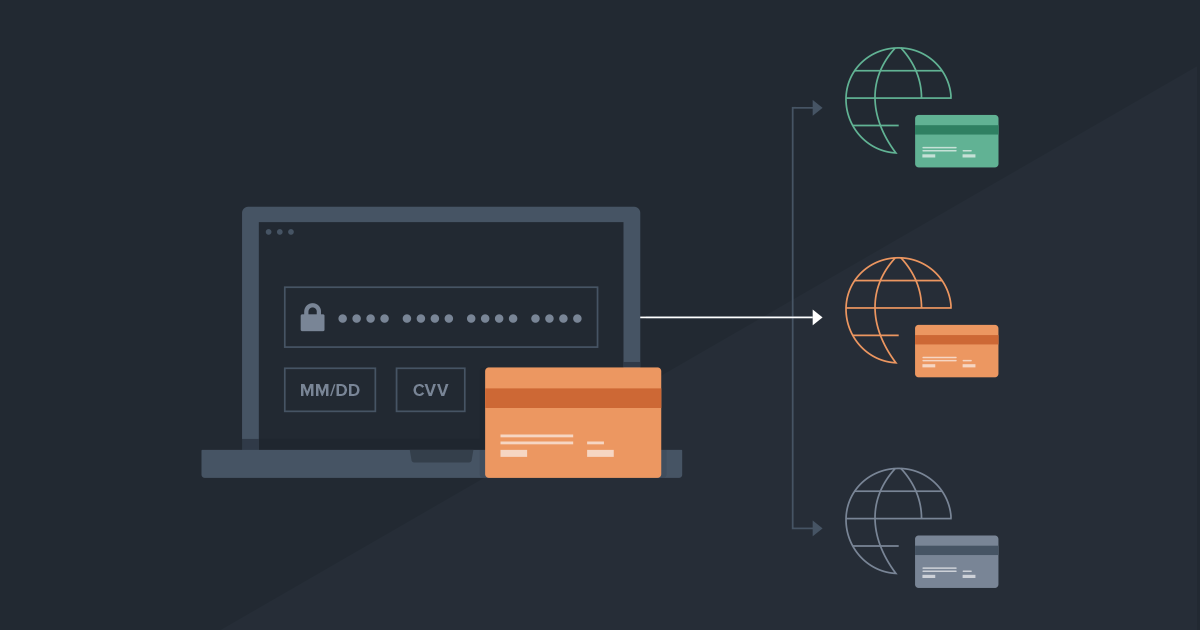4 insider secrets about payment gateways

Some things just go perfectly together: peanut butter + jelly, movies + popcorn, and businesses + payment gateways.
OK, payment gateways aren’t quite as exciting as great food and entertainment. But if you care about taking payments the right way, implementing the right payment strategy can make a meaningful difference for your business.
Recurly recently hosted a webinar with three of our own payments experts to help subscription companies design their ideal gateway strategy. They discussed a wide variety of topics and revealed some fascinating secrets about how gateways work.
While we encourage you to watch the full recording for all of the advice and information dished, here are the top insights that our experts shared.
1. The perfect gateway doesn’t exist
Choosing the right gateway is a challenge not just because there are so many of them, but also because no single one is ideal for every user case. (If there were one single gateway that was optimal for everyone, this blog post would quickly be over). The reality is that even the largest companies in the world—think of businesses like Netflix, Apple, Microsoft, and Amazon—partner with multiple gateways because each one offers a different set of features and prices.
Some gateways are region-specific while others span the globe. Depending on where you do business and which currencies you need to accept, you might choose a gateway appropriate to your needs. Businesses that sell into many different countries might want to go with a gateway like Adyen, for instance, but those that only do business in, say, the US and want to take advantage of specialized payment methods like Venmo may choose to go with a gateway like Braintree.
From a pricing standpoint, some gateways charge a flat rate—for instance, $0.30 + 2.9% of every transaction, regardless of transaction volume. There’s another pricing model in play called interchange-plus pricing, in which you’re charged the interchange fee determined by the card network (e.g., Visa or American Express) plus a set markup. Depending on how much volume your business does, you might prefer one pricing model over the other, so you’ll have to choose a payment gateway appropriately.
2. Not all gateways support recurring payments
Recurring billing (and the subscription business model it enables) is fairly new to most industries. Consequently, many gateways and payment methods have only recently started to support both one-time and recurring payments. Some payment methods, like Alipay and WeChat Pay, don’t support recurring payments at all. Others, like Venmo and Apple Pay, only just enabled recurring billing in the last few years.
Fortunately, all 20+ gateways Recurly integrates with do support recurring payments, so if you’re a subscription business (or are thinking of starting up a subscription offering), rest assured that any one of Recurly’s integrated gateways will have your back.
3. There are lots of ways to optimize gateway routing
Gateway routing can positively impact your bottom line. Even better, companies that have a multi-gateway strategy have an abundance of options when it comes to routing payments through different gateways.
Many subscription businesses choose to route transactions through certain gateway based on currency, since one gateway may not support a certain currency. They may also route transactions based on who they’re selling to (B2B or B2C, for instance), product type, transaction frequency, or transaction amount. As you can see, there are a staggering number of combinations possible. All of this flexibility can lead to greater payment success and help you save on billing costs.
4. Don’t blindly sign up with new payment gateways without careful consideration
Recurly highly encourages subscription model companies to partner with multiple gateways in order to optimize costs and take advantage of gateway failover and gateway routing. But that doesn’t mean you should run off and sign up with every gateway under the sun. Keep a few things in mind:
Ensure your gateway isn’t forcing you into an exclusivity agreement that’ll prevent you from using another gateway down the line. For example, today you might only do business in the US, but next year you may want to expand into Asia or Africa. Make sure you have the option to use another gateway if this happens, since your current gateway may not be optimal for all geographies.
Don’t get locked into a long-term contract with a gateway that could prove expensive or otherwise detrimental to your business. Depending on a few factors, such as the processor and transaction volume, you may have to pay a hefty fee to get out of this contract.
Make 100% sure your gateway offers data portability—that is, the ability to take your consumers’ credit card data elsewhere. You might want to take this data to a subscription management and billing platform, like Recurly, or to another gateway. The last thing you want is your gateway holding your consumers’ payment information hostage.
Wrap up
We hope you found these tips and tricks about payment gateways useful. If you’re interested in understanding where gateways fit within the payments ecosystem, getting the lowdown on how gateways charge, and knowing how gateway failover works, watch the full webinar recording!


